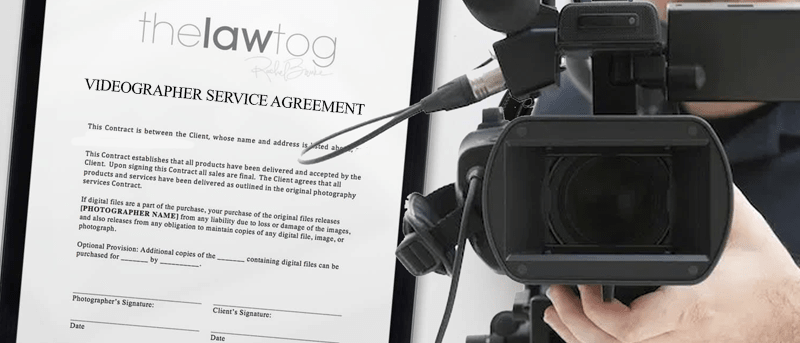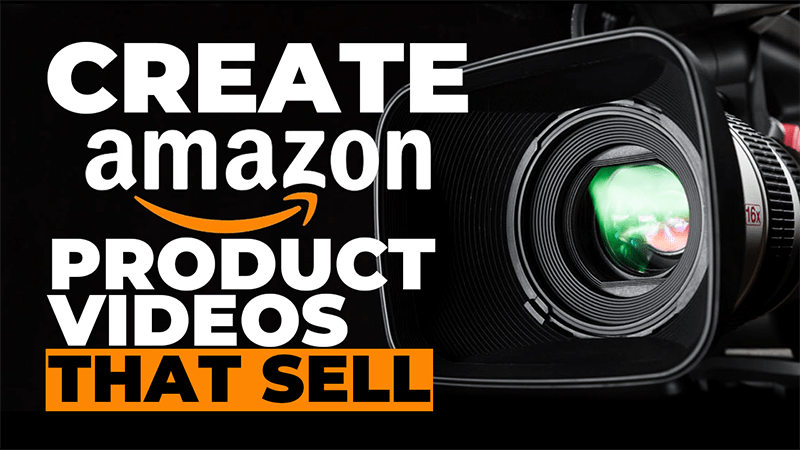The Production meeting is your time to iron out the details, get your client’s feedback on necessary shots and most importantly, get them to sign your videographer service agreement which outlines expectations and payment terms.
In this tutorial, we give you a 5 page, attorney prepared, blank Videographer Services Agreement template to download and easily modify for your business with step by step instructions on how to fill it out.
A Videographer Service Agreement is an agreement between a contractor/videographer and a client. This type of service agreement is helpful because it provides the terms and conditions of the arrangement. What does the client wish to have included in the video? How much will you be paid, and when? Are there any restrictions while shooting the video? What equipment or accommodations must the client provide?
These are all questions that will be answered in the agreement. In addition, the agreement will reaffirm that an employee- employer relationship is not created.
A videography services agreement outlines each party’s rights and responsibilities, and allows the parties to negotiate and determine the services that will be provided. The enclosed document can provide a good starting point for your contractual arrangement. You and the videographer must continue to discuss the terms of your agreement, settling questions about work parameters, payment, and responsibilities. Once you have agreed on terms and have signed the attached form, each party can focus on its area of expertise: the company on the development of its business and the videographer on the tasks assigned.
Download the Agreement
Everything you spoke about with the client and what they need should be included in what is essentially a proposal. It should align with your services.
Videographer service agreement states detailed services you are going to perform, time of completion, terms and restrictions, and payment and the deposit amount, payment dates, usage rights and kill fees.
Your Videographer service agreement should be so clear that they require no explanation from you. This is completely the wrong time to attempt to sell, or re-sell, the prospect on your services.
You have already done that. Assume the sale. Make sure every detail of this agreement is focused on their project, their deadline and their budget.
Think of your production meeting as a natural continuation of your sales presentation, only shorter. Review the project goals, schedule the approval dates/meetings, confirm the price, then both of you sign and date the agreement.
Instructions
The following provision-by-provision instructions will help you understand the terms of your agreement.
Please review the entire document before starting your step-by-step process.
- Cover Page: Include your company name and slogan, address, phone number and website.
- Introduction: Identifies the document as a videography services agreement. Write in the date on which the agreement will become effective (often the date on which it is signed). Identify the parties and, if applicable, what type of organization(s) they are. Note that each party is given a name (e.g., “Agent”) that will be used throughout the agreement. As you probably guessed, the hiring party called the “Talent” and the filming party is called the “Agent.”
- Section 1: Detail the services to be provided by Agent. Be sure to specify the type of event that Agent will by shooting video/taking pictures of, the type of finished product the Talent desires, number of copies of the video, etc. Attach an appendix if you require more space.
- Specify any restrictions upon the positioning, presence, or actions of Agent while shooting video for Talent.
- Section 2: Time of Completion. Indicates that the agreement will last until termination or until the listed services are completed. This allows the parties to set a deadline by which all services must be finished. Delete this provision if you do not want to set an expiration date for your agreement.
- Section 3: Equipment. If you’re providing equipment for your client to use- outline it here.
- Section 4: Payment. The form of Exhibit A provided is meant as an example only. You and the other party should restructure and revise this exhibit to fit your situation and individual needs. There are three types of compensation arrangements outlined in the form. You can choose any of those, or come up with a separate structure better suited to your agreement
- Section 5: Other expenses and accomodations. Any reimbursement for travel expenses, etc. Should be outlined here. Be sure to write none if there are none- don’t leave any holes in this agreement.
- Section 6: Term. Agreed time upon when the project will be completed.
- Section 7: Notice. Lists the addresses to which all official or legal correspondence should be delivered. Write in a mailing address for both the Company and the Videographer.
- Section 8: General Provisions.The outline of the entire agreement for your client to review or add to.
Other Provisions to add:
- Results and Proceeds. Grants ownership of all of the videos created by the Videographer under the Agreement to the Company. This includes the right to modify or edit the videos, and the right to make money from them. The Videographer expressly waives all of these rights under this section.
- Publicity. Permits the Company to control how the videos will be used and how the Videographer can provide information about the agreement. Essentially, the only thing that the Videographer can do without the Company’s permission is use examples of the videos as part of his or her portfolio.
- Use of Videographer’s Name. Allows the Company, during the term of the agreement, to use the Videographer’s name in connection with the videos.
- No Obligation to Use. A notation that although the Company has rights to use the Videographer’s videos, it does not have to do so: it is obtaining the ability to do it without the obligation of having to.
- Representations and Warranties. Details the Videographer’s promises under the agreement. Essentially, he or she is agreeing to enter into the arrangement based on the conditions listed in this section (e.g., that he or she is capable of entering the agreement and satisfying its terms).
- Company’s Rights. Gives the Company the ability to use the videos in any way it pleases throughout the world and specifically waives any other party’s right to demand payment for that use.
- Third Parties; Taxes. Provides that the Videographer can’t bind the Company into any agreements with any third parties. This section also reaffirms that the Videographer is an independent contractor (i.e., not an employee) and is therefore responsible for paying its own employment-related taxes.
- Termination. Explains that certain actions or events, including written notice or material breach, will cause the agreement to end out of time (i.e., before the services are completed or the end of the term, if any). Write in the amount of notice a party must give of its intent to terminate or to notify the other of a breach.
- Default by Videographer. Explains the consequences of the Videographer’s failure to produce adequate videos and allows the Company to choose one of the two following options: (1) declare a default and terminate the agreement or (2) set a new delivery date for the videos.
- Indemnification. Allocates responsibilities between the parties if problems arise in the future, and protects the Company from the financial consequences of the Videographer’s negligent or intentional conduct.
- Entire Agreement. The parties’ agreement that the document they’re signing is “the agreement” about the issues involved. Unfortunately, the inclusion of this provision will not prevent a party from arguing that other enforceable promises exist, but it will provide you some protection from these claims.
- Assignment. Explains that the Company may assign its obligations and interests without obtaining the Videographer’s permission. However, the Videographer is not entitled to assign its own interests under the agreement.
- Modification. Indicates that any changes to the document are ineffective unless they are made in writing and signed by both parties.
- Governing Law. Allows the parties to choose the state laws that will be used to interpret the document. Note that this is not a venue provision. The included language will not impact where a potential claim can be brought. Write in the applicable state law in the blanks provided.
- Severability. Protects the terms of the agreement as a whole, even if one part is later invalidated. For example, if a state law is passed prohibiting choice-of-law clauses, it will not undo the entire agreement. Instead, only the section dealing with choice of law would be invalidated, leaving the remainder of the agreement enforceable.
- Counterparts/Electronic Signatures. The title of this provision sounds complicated, but it is simple to explain: it says that even if the parties sign the agreement in different locations, or use electronic devices to transmit signatures (e.g., fax machines or computers), all of the separate pieces will be considered part of the same agreement. In a modern world where signing parties are often not in the same city – much less the same room – this provision ensures that business can be transacted efficiently, without sacrificing the validity of the agreement as a whole.
- Publicity. Permits the Company to control how the videos will be used and how the Videographer can provide information about the agreement. Essentially, the only thing that the Videographer can do without the Company’s permission is use examples of the videos as part of his or her portfolio.
Once your agreement is signed and accepted, it turns your prospect into a client and it becomes the legal instrument, the agreement, that commits both of you to the project.
Last but not least, get the deposit check. Most of the time, you will not even have to ask. You simply need to confirm. As the ink is drying on the agreement and your new client is slipping his pen back into his jacket pocket, he will usually say, “So you need a check for _____ dollars, is that correct?”
“Yes.”
He will get it for you, or he will have someone get it for you. When he hands it to you, shake his hand, thank him for his business, confirm your next meeting, and LEAVE.
Many video pros are tempted to relax at this point and chit-chat. Be professional. GET OUT. The meeting has peaked. Anything you say from this point forward at this meeting has the undesireable effect of UNSELLING you and your services.
They don’t have a check or the money right there?
Carry blank invoices for just these situations. Fill it out and hand it to him. Sometimes that’s all it takes in order for you to collect your check right then. At the very least, you won’t have to email, fax or mail it.
Once you have your signed agreement and your deposit check, you are ready to begin work.






